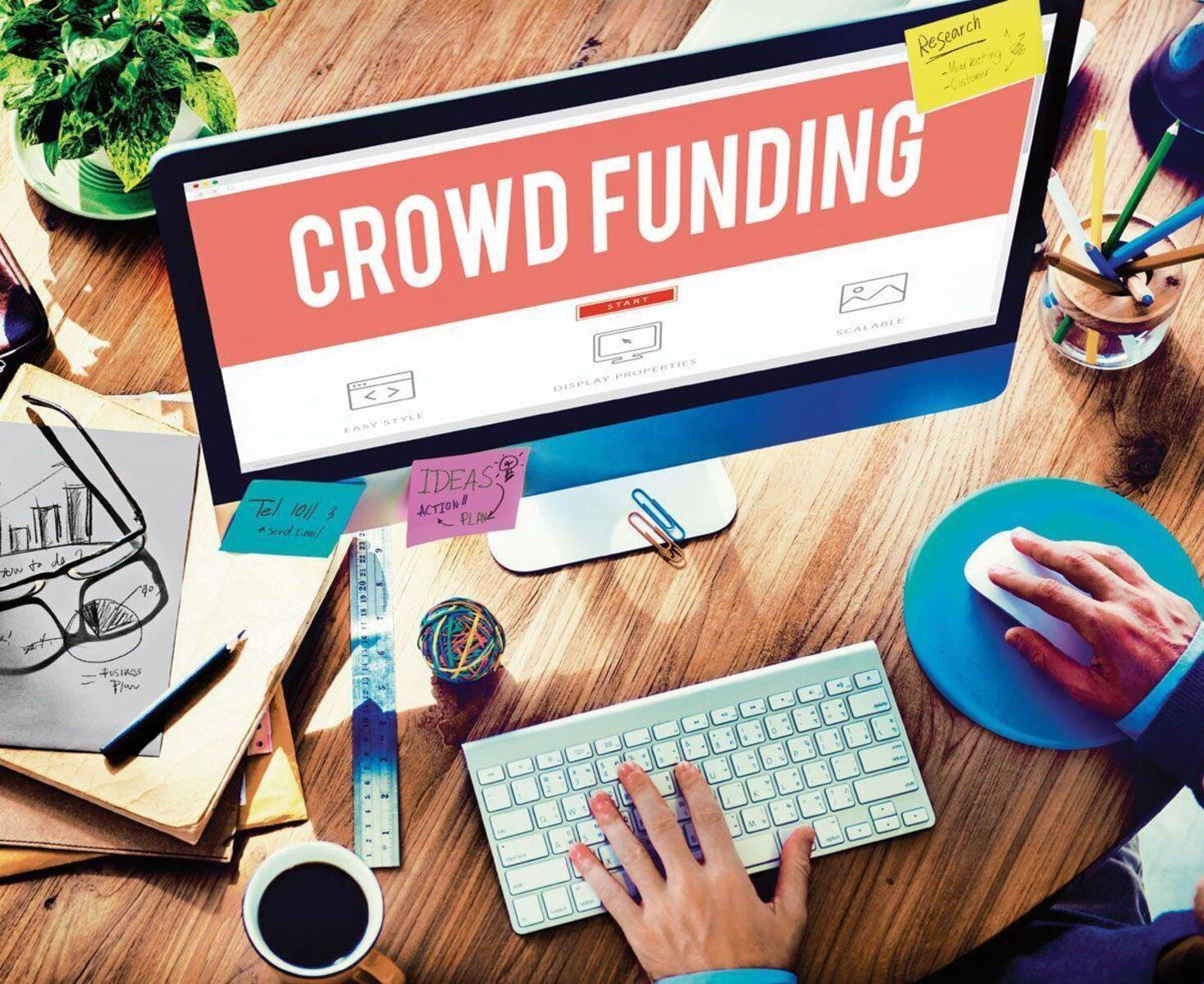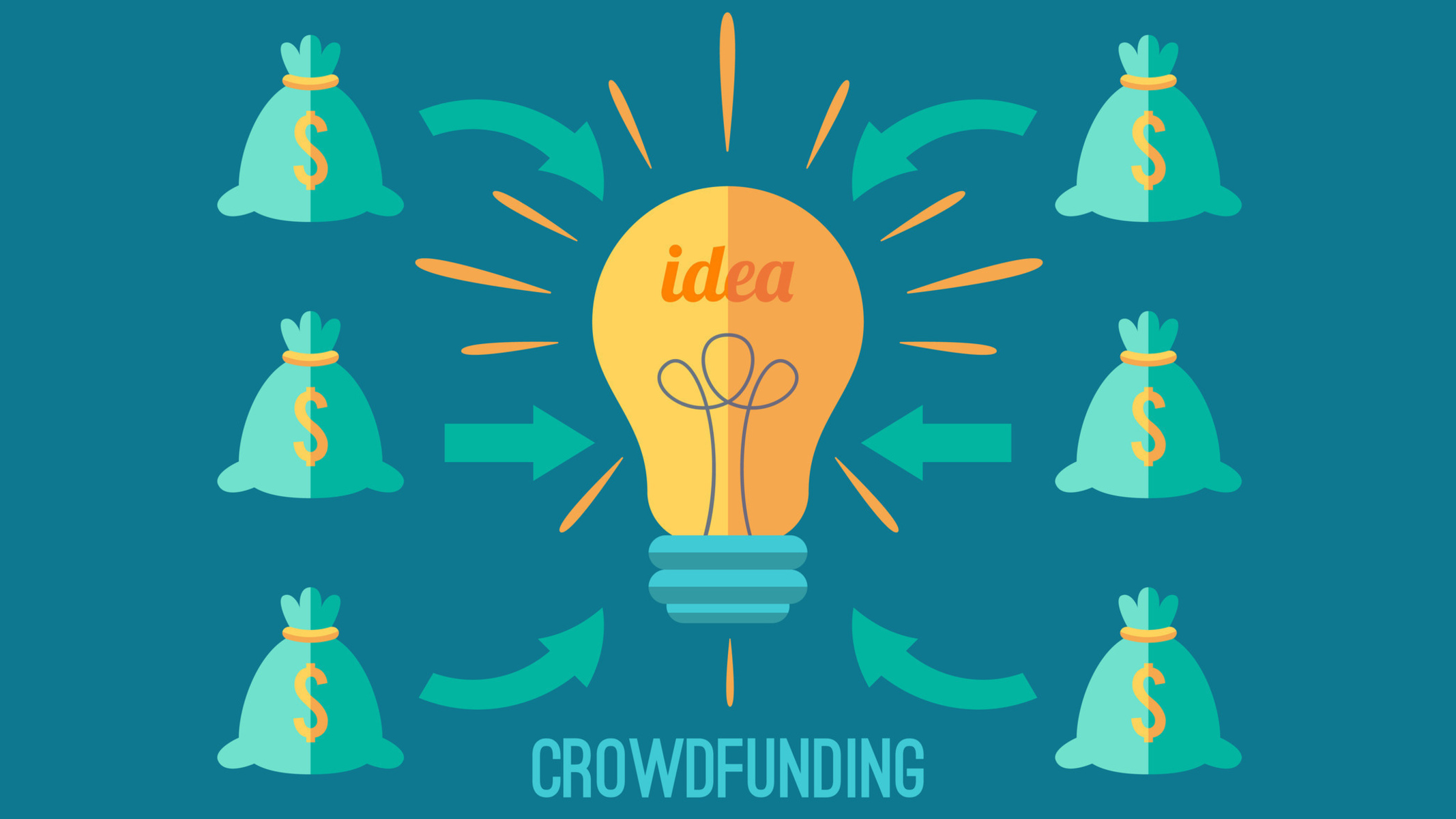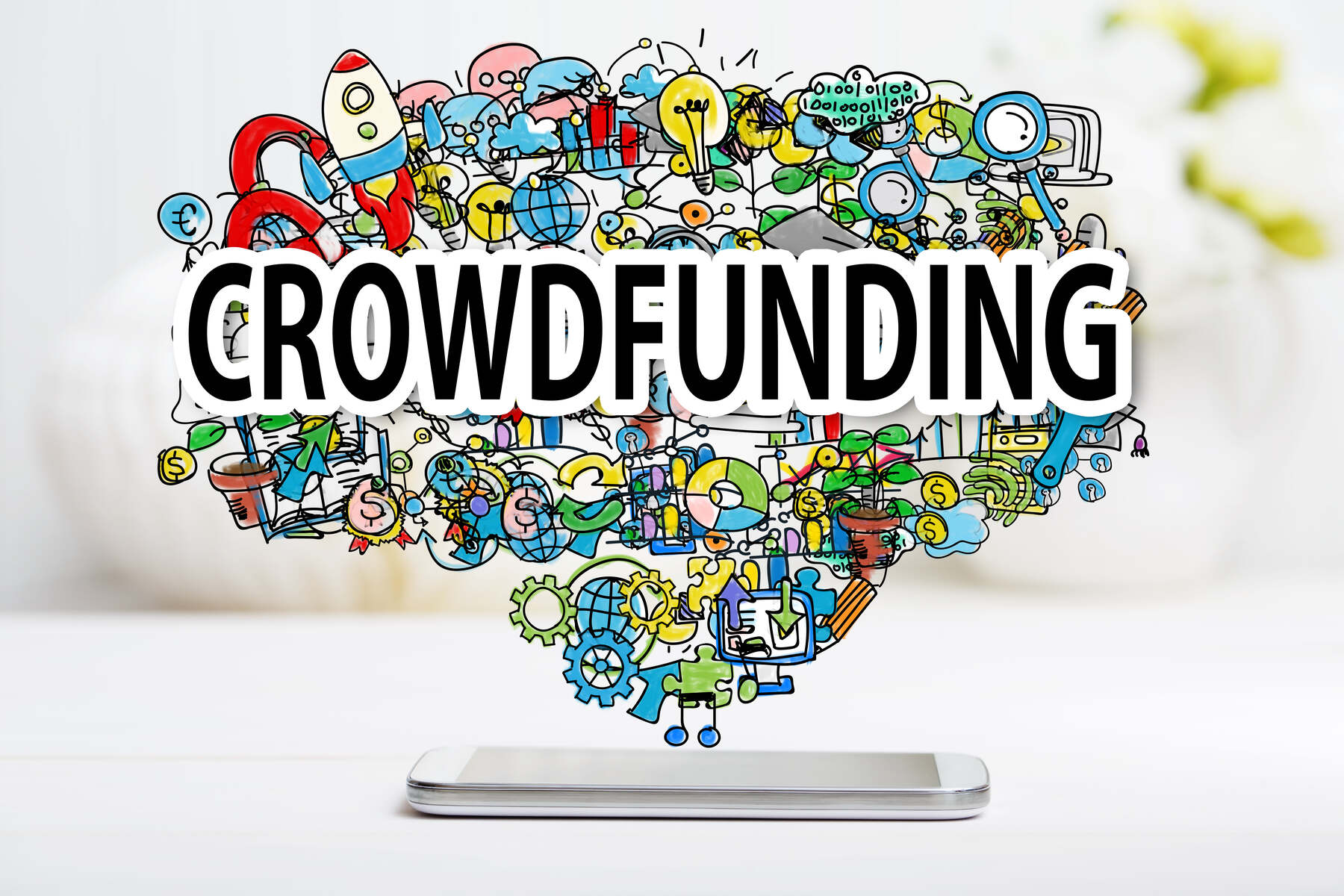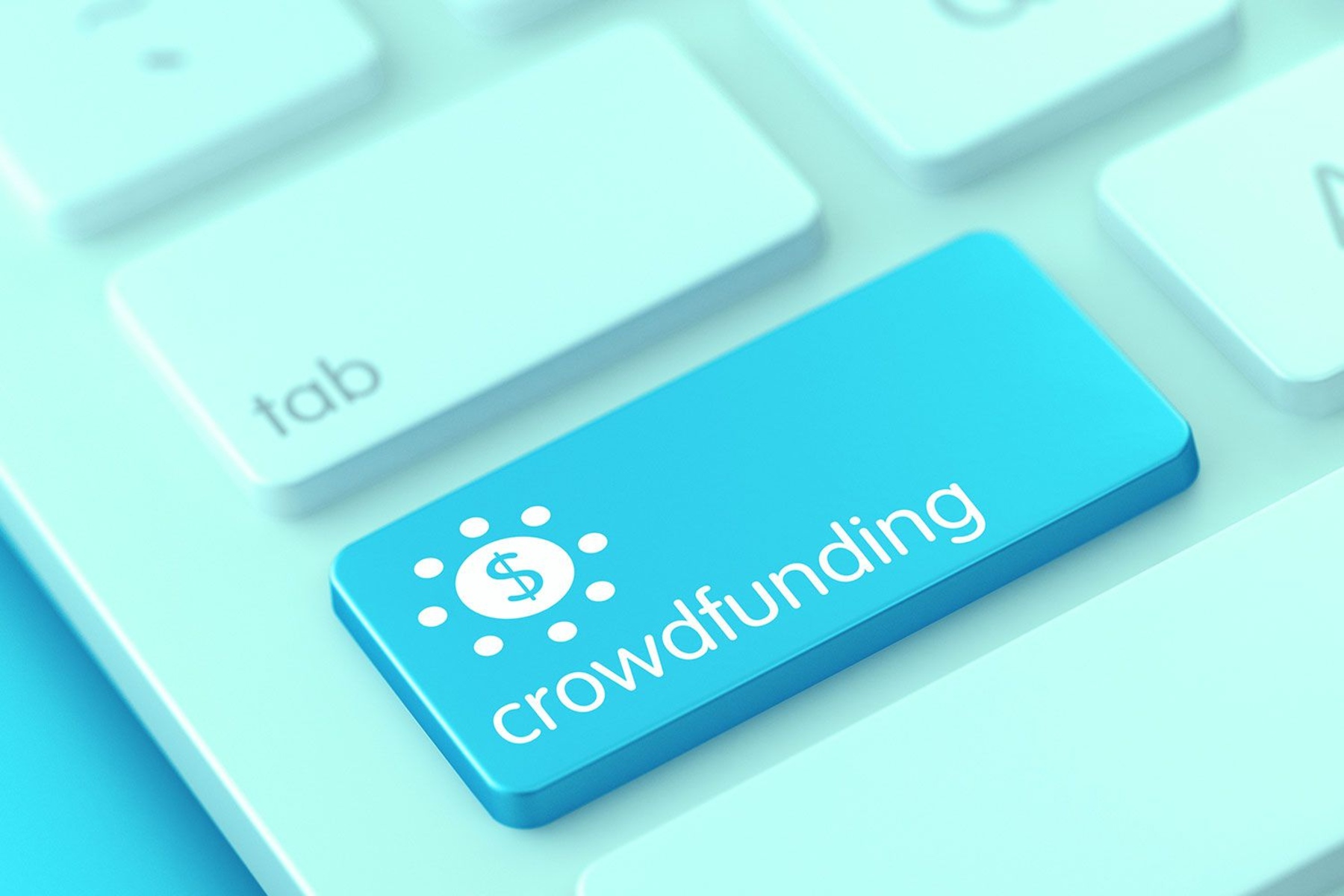Introduction
Crowdfunding has gained immense popularity in recent years as a means for individuals and businesses to obtain funding for various projects and ventures. This innovative approach to financing has revolutionized the traditional fundraising landscape, providing opportunities for entrepreneurs, artists, and individuals with creative ideas to bring their visions to life.
In essence, crowdfunding involves soliciting small contributions or investments from a large number of people, typically through online platforms. It offers a unique way for individuals to connect with potential supporters or investors and receive financial backing for their endeavors. The concept of crowdfunding is rooted in the belief that collective contributions can greatly impact and empower the success of a project.
One of the key reasons why crowdfunding has become such a popular choice for fundraisers is its accessibility. Unlike traditional financial institutions, crowdfunding platforms provide a level playing field, allowing individuals from all walks of life to participate. Whether you’re a budding entrepreneur looking to launch a new product, a nonprofit organization seeking donations for a cause, or an artist hoping to produce a creative masterpiece, crowdfunding opens doors to a wider audience and potential backers.
In this article, we will explore the many benefits of crowdfunding and why it has emerged as a viable funding option for individuals and businesses alike. We will also delve into some of the challenges and considerations that come with crowdfunding, ensuring that you have a well-rounded understanding of this innovative fundraising method.
Benefits of Crowdfunding
Crowdfunding offers numerous benefits that make it an attractive funding option for individuals and businesses. Let’s explore some of the key advantages:
- Access to Capital: One of the primary benefits of crowdfunding is that it provides access to capital that may not be available through traditional means. Entrepreneurs and startups often struggle to secure loans or investments from financial institutions, especially if they lack a track record or collateral. Crowdfunding allows them to bypass these barriers and tap into a pool of potential supporters and investors who believe in their idea or project.
- Market Validation: Crowdfunding serves as an excellent tool for market validation. By launching a crowdfunding campaign, individuals can gauge the level of interest and demand for their product or concept. If the campaign gains traction and attracts significant support, it serves as a strong indicator that there is a market for the offering.
- Increased Exposure and Visibility: Crowdfunding platforms provide a built-in audience of potential backers and supporters. Through these platforms, creators can showcase their projects to a global community, expanding their reach far beyond their immediate networks. This exposure can lead to increased visibility, media attention, and even partnerships or collaborations with industry influencers.
- Building a Community: Crowdfunding is not just about raising funds; it is also about building a community of dedicated supporters. Backers who contribute to a campaign often become brand ambassadors, spreading the word about the venture and establishing a strong network of advocates. This community engagement can lead to repeat support, valuable feedback, and long-term customer relationships.
- Minimizing Risks: Unlike traditional funding methods where entrepreneurs may have to take on heavy debt or equity obligations, crowdfunding allows for a more risk-sharing approach. By gathering multiple smaller contributions, creators can distribute the risk among a larger number of supporters, reducing the financial burden on any single individual or entity.
- Flexible Funding Options: Crowdfunding provides flexibility in terms of funding options. Campaign creators can choose between different models such as rewards-based crowdfunding, where backers receive exclusive perks or products, or equity-based crowdfunding, allowing investors to own a stake in the venture. This flexibility allows creators to tailor their fundraising strategies to suit their specific needs and circumstances.
- Innovation and Collaboration: Crowdfunding fosters innovation and collaboration by encouraging individuals to pursue unique and groundbreaking ideas. It empowers creators to think outside the box and present their ventures directly to the public. This democratization of funding enables projects that may have been overlooked by traditional investors but resonate with a passionate audience.
- Empowering Small Businesses and Entrepreneurs: Crowdfunding levels the playing field for small businesses and entrepreneurs who may lack the resources or connections to secure funding through traditional avenues. It allows them to showcase their potential and gain support purely based on the merit of their ideas, products, or services.
- Engaging with Supporters and Backers: Crowdfunding provides a unique opportunity for creators to engage and connect directly with their supporters and backers. It allows for open communication, updates on the project’s progress, and a sense of involvement in the journey. This personal connection can foster a sense of loyalty and commitment among backers, leading to long-term support beyond the crowdfunding campaign.
These are just a few of the many benefits that crowdfunding offers to both creators and backers. It has undeniably transformed the way individuals and businesses raise funds, opening doors to opportunities that were once out of reach.
Access to Capital
One of the significant advantages of crowdfunding is the access it provides to capital that might otherwise be difficult to obtain through traditional means. For many entrepreneurs and startups, securing loans or investments from financial institutions can be a daunting and challenging process, especially if they lack a proven track record or valuable assets to leverage as collateral.
Crowdfunding platforms offer an alternative funding option by allowing individuals to present their projects or business ideas directly to potential backers and receive financial support in return. This approach eliminates the need to rely on a small number of institutional investors or navigate complex loan application processes.
By showcasing their projects on crowdfunding platforms, entrepreneurs can tap into a pool of interested individuals who are willing to contribute even small amounts towards the venture. This democratization of funding allows entrepreneurs from all backgrounds and industries to pursue their dreams and bring their ideas to life.
Moreover, crowdfunding campaigns provide an excellent opportunity to convey the value and potential of the project to potential backers. By presenting a compelling story, demonstrating market demand, and showcasing the benefits of the offering, entrepreneurs can attract a wide range of supporters who align with their vision and are eager to contribute financially.
Crowdfunding not only allows access to capital but also provides a platform to validate the market potential of a product or idea. The level of interest and support a crowdfunding campaign receives can serve as an indicator of market demand and potential success. This validation can be valuable, especially for entrepreneurs who are still in the early stages of product development or market testing. It allows them to gather feedback, refine their offerings, and make necessary adjustments before fully launching in the market.
Furthermore, crowdfunding campaigns often attract attention from media outlets, industry influencers, and potential strategic partners. The exposure gained through successful campaigns can lead to additional funding opportunities, partnerships, and business development prospects that might not have been possible through traditional funding routes.
In summary, crowdfunding unlocks access to capital for individuals and businesses, regardless of their background or financial resources. It offers an inclusive and empowering approach to fundraising, allowing entrepreneurs to showcase their projects, connect with interested individuals, and receive financial support to turn their ideas into reality.
Market Validation
One of the significant benefits of crowdfunding is the ability to obtain market validation for a product, service, or idea. Before investing significant time, effort, and resources into developing a new offering, entrepreneurs want to ensure that there is a demand and market fit. Crowdfunding provides an excellent platform to gauge the level of interest and validate the market potential.
By launching a crowdfunding campaign, entrepreneurs can present their concept to a wide audience and assess the response it generates. If the campaign attracts a significant number of backers and achieves its funding goal, it serves as a clear indication that there is a market demand for the product or idea. This validation can provide entrepreneurs with the confidence to move forward with their plans, knowing that there is a target audience willing to support and invest in their offering.
In addition to financial support, the feedback and comments received during a crowdfunding campaign can be invaluable in refining the product or idea. Backers often provide insights, suggestions, and critiques that can help shape the offering and improve its market appeal. This ongoing dialogue with potential customers enables entrepreneurs to make necessary adjustments, incorporate valuable features, and address potential pain points before launching in the market.
Crowdfunding is a transparent and real-time method for testing the viability of a product or idea. Instead of relying solely on market research and projections, entrepreneurs have the opportunity to present their offerings directly to potential customers and assess their reactions. They can analyze the demographics and characteristics of the backers supporting their campaign, providing valuable insights into the target market and identifying key customer segments.
Moreover, the success of a crowdfunding campaign can attract attention from industry players, media outlets, and potential strategic partners. The validation received through successful crowdfunding can open doors to strategic collaborations, distribution partnerships, and investment opportunities. This can significantly impact the trajectory of the venture, providing additional resources and support to further fuel growth and success.
In summary, crowdfunding serves as a powerful tool for market validation. It allows entrepreneurs to test the waters, assess market demand, gather valuable feedback, and refine their offerings based on real-time customer insights. By gauging the level of support and interest received through a crowdfunding campaign, entrepreneurs can make informed decisions and move forward with confidence, knowing that their product or idea has been validated by the market.
Increased Exposure and Visibility
Crowdfunding platforms provide creators with an unparalleled opportunity to gain exposure and increase visibility for their projects or ventures. Traditional funding methods often limit entrepreneurs’ reach to their immediate networks or rely on the attention of a handful of investors. In contrast, crowdfunding opens up a vast audience of potential backers and supporters worldwide.
By launching a crowdfunding campaign, creators can leverage the platform’s built-in community and marketing capabilities to showcase their offerings to a global audience. This increased exposure goes beyond the confines of personal or professional networks, allowing creators to tap into new markets, demographics, and geographic regions.
The visibility gained through a crowdfunding campaign can lead to a range of benefits. First and foremost, it increases the chances of attracting backers who resonate with the project’s goals and find value in the offering. These backers can become brand advocates, spreading the word about the project to their own networks and amplifying its reach.
Additionally, successful crowdfunding campaigns often attract attention from media outlets, industry influencers, and potential strategic partners. Journalists and bloggers are always on the lookout for exciting and innovative projects to feature, and a compelling crowdfunding campaign can be a natural fit. This media exposure can lead to further visibility, buzz, and credibility for the venture.
Industry influencers, whether in the form of bloggers, social media personalities, or experts in the field, can also play a crucial role in amplifying the visibility of a crowdfunding campaign. Their endorsements and recommendations can drive traffic to the campaign page, attract new backers, and increase awareness about the product or idea being promoted.
Furthermore, crowdfunding platforms often have features and algorithms that showcase trending or popular campaigns. High-performing campaigns may appear on the platform’s homepage or in curated lists, providing additional exposure and visibility to a broader audience. This increased prominence increases the chances of attracting more backers and reaching the funding goal.
Lastly, crowdfunding campaigns can be an opportunity for creators to engage with their target audience directly. The platform’s communication tools allow for open dialogue, updates, and engagement with potential and existing backers. This interaction not only builds a supportive community but also creates an additional avenue for word-of-mouth marketing and organic growth.
In summary, crowdfunding offers creators a unique opportunity to increase exposure and enhance visibility for their projects or ventures. By leveraging the platform’s expansive audience, media attention, and potential partnerships, creators can extend their reach beyond traditional networks and capture the attention of a global audience.
Building a Community
Crowdfunding goes beyond simply raising funds; it offers the opportunity to build a dedicated community of supporters around a project or venture. This sense of community engagement is a valuable asset for creators and can lead to long-term success beyond the initial funding campaign.
When individuals back a crowdfunding campaign, they become invested in the success of the project. They become more than just financial contributors; they become brand ambassadors and advocates. This connection between creators and backers forms the foundation of a community that can provide ongoing support and contribute to the project’s growth.
Through a crowdfunding campaign, creators have the ability to share their story, vision, and updates with their backers. This open line of communication creates a sense of transparency and inclusion, making backers feel like they are part of the journey. Updates on the project’s progress, milestones achieved, and challenges overcome create a sense of anticipation and involvement.
Creators can also leverage the crowdfunding platform’s communication tools to engage with their community directly. Responding to questions, acknowledging feedback, and fostering meaningful conversations not only builds trust but also strengthens the bond between creators and backers. This engagement can lead to valuable insights, suggestions, and even collaborations that further enhance the project’s success.
Building a community through crowdfunding goes beyond the campaign itself. Successful projects often have a loyal and enthusiastic fan base that continues to support the venture long after the funding goal has been reached. Backers who are passionate about the project are likely to become repeat customers, serving as brand evangelists and helping to generate buzz and sales.
Moreover, a strong community can help creators navigate challenges and overcome obstacles. Whether it’s providing moral support, offering advice, or sharing resources, a passionate community can rally around the project and assist in its growth. They can act as a support network, helping creators overcome hurdles and adapt to changing circumstances.
Additionally, the sense of community built through crowdfunding can extend beyond the project itself. Creators often gain access to a network of like-minded individuals, industry professionals, and potential partners. This network can provide valuable connections, professional opportunities, and collaborations that may not have been possible otherwise.
In summary, crowdfunding allows creators to build a community of dedicated supporters who are invested in their project. This community engagement goes beyond the initial funding campaign and can provide ongoing support, constructive feedback, and business opportunities. By fostering a sense of community, creators can create a loyal fan base that serves as the foundation for long-term success.
Minimizing Risks
Crowdfunding offers a unique approach to fundraising that can help minimize risks for creators. Traditional funding methods often involve significant financial obligations, such as taking on loans or offering equity stakes. Crowdfunding, on the other hand, allows for a more distributed and shared approach to funding, minimizing the financial burden on any single individual or entity.
One of the ways crowdfunding minimizes risks is by spreading the financial investment across a larger pool of backers. Rather than relying on a single investor or lender, creators can gather contributions from a diverse group of individuals who are interested in supporting the project. Each backer’s contribution may be relatively small, but collectively, they can add up to a significant amount of funding.
By distributing the risk in this way, creators are not solely reliant on the success or failure of one investor or lender’s decision. Instead, they have a broader base of support, which can help absorb any potential setbacks or challenges that may arise during the project’s development or execution.
In addition to financial risk, crowdfunding also allows creators to validate their ideas and minimize the risk of market failure. By presenting their concept to a wider audience through a crowdfunding campaign, creators can gauge the level of interest and demand for their product or service before fully committing to its development or launch.
If the campaign fails to gain traction or attract sufficient funding, it serves as an early indicator that there may be limited market demand. In such cases, creators have the opportunity to reassess their approach, make necessary adjustments, or even pivot to a different idea or project. This early market validation helps minimize the risk of investing significant time and resources into an offering that may not resonate with the target audience.
Crowdfunding also allows creators to gather feedback and insights from the community of backers before finalizing their product or idea. This feedback can be invaluable in identifying potential issues, refining the offering, and addressing any concerns or challenges that may arise. By involving the community of backers in the development process, creators can make informed decisions and minimize the risk of launching a product or service that falls short of expectations.
Furthermore, crowdfunding provides creators with a platform to test and refine their marketing and sales strategies. By analyzing the response to their campaign, creators can gain insights into the most effective messaging, channels, and target audiences for their offering. This iterative approach to marketing can minimize the risk of investing resources into ineffective or inefficient marketing tactics and help optimize the reach and impact of future marketing efforts.
In summary, crowdfunding minimizes risks for creators by spreading the financial investment across a larger group of backers, validating market demand before fully committing to development, gathering feedback and insights from the community of backers, and testing and refining marketing strategies. This shared and iterative approach helps creators mitigate potential risks and increases the chances of success for their projects.
Flexible Funding Options
Crowdfunding offers creators a range of flexible funding options to suit their specific needs and circumstances. Unlike traditional funding methods that often follow a strict structure, crowdfunding allows creators to tailor their fundraising strategies to align with their goals and the expectations of their backers.
One common funding model in crowdfunding is rewards-based crowdfunding. In this model, creators offer various rewards or perks to backers based on their level of contribution. These rewards can range from exclusive merchandise, early access to the product, personalized experiences, or other incentives that add value to the backer’s support. This model allows creators to leverage their creativity and offer unique experiences or products to attract backers.
Another funding option is equity-based crowdfunding. In this model, backers receive an equity stake or shares in the venture in exchange for their financial support. This approach allows creators to raise capital while simultaneously giving backers the opportunity to share in the potential financial success of the project. Equity-based crowdfunding is particularly appealing for startups and businesses looking to raise larger amounts of capital and offer investors a potential return on their investment.
Fixed funding and flexible funding are two approaches to funding goals in crowdfunding campaigns. In fixed funding, the creator sets a specific funding target that must be met within a specified time frame. If the campaign does not reach the funding goal, all the funds are returned to the backers, and the project does not move forward. This model provides a sense of certainty for both the creator and the backers, ensuring that the project can be fully funded before proceeding.
On the other hand, flexible funding allows creators to keep the funds raised, regardless of whether the campaign reaches its initial funding goal. This flexibility can be beneficial for creators who can still use the funds to propel their project forward, even if the full target is not met. Flexible funding models can allow for more experimentation, adaptation, and incremental development, giving creators more freedom in their creative pursuits.
Furthermore, crowdfunding platforms often give creators the ability to set stretch goals. Stretch goals are additional funding targets that, if reached, unlock additional benefits or features for the project. These goals can create a sense of excitement and motivation among the backers, encouraging them to increase their contributions and help the campaign reach new milestones. Stretch goals can be a powerful tool to generate momentum and potentially exceed the initial funding expectations.
Overall, the flexible funding options offered by crowdfunding platforms give creators the freedom to choose a strategy that aligns with their objectives and the preferences of their backers. Whether it’s rewards-based or equity-based crowdfunding, fixed or flexible funding goals, or the inclusion of stretch goals, creators have the flexibility to design a crowdfunding campaign that fits their unique needs and allows them to engage with their backers in a meaningful way.
Innovation and Collaboration
Crowdfunding fosters innovation and collaboration by providing a platform for individuals to pursue unique and groundbreaking ideas. It serves as a catalyst for creativity and encourages creators to think outside the box, pushing the boundaries of what is possible. Through crowdfunding, innovative projects that may have been overlooked by traditional investors gain the opportunity to flourish.
One of the reasons crowdfunding promotes innovation is the direct connection between creators and their backers. Unlike traditional funding methods where intermediaries dictate investment decisions, crowdfunding allows creators to present their ideas directly to potential supporters. This direct engagement leads to a more diverse range of projects being funded, including niche or unconventional ideas that may not fit within mainstream investment criteria.
Crowdfunding campaigns often attract backers who are passionate about innovation and eager to support groundbreaking projects. By showcasing their ideas on a crowdfunding platform, creators can tap into a community of like-minded individuals who appreciate and embrace new concepts. These backers understand the potential risks involved and are willing to be part of an experimental journey, fostering an environment conducive to pushing boundaries and taking calculated risks.
Moreover, crowdfunding facilitates collaboration among creators, backers, and the wider community. Backers can provide valuable feedback, suggestions, and expertise to help improve the project. This collaboration can lead to enhancements, refinements, and unexpected synergies. Creators can also leverage the collective knowledge and skills of the community to overcome challenges and make the project more robust.
In some cases, crowdfunding can even spark collaborations between creators themselves. As projects gain visibility, creators in complementary or related fields may discover opportunities for partnerships and joint ventures. These collaborations can lead to the creation of more comprehensive and innovative solutions, combining the expertise and resources of multiple parties.
Crowdfunding campaigns also serve as a platform for showcasing prototypes or early-stage products. By presenting their ideas to the public, creators can gather valuable feedback and insights that can inform the development process. Backers can provide suggestions for improvements, identify potential challenges, or even contribute their own knowledge to enhance the project’s viability.
Furthermore, crowdfunding platforms often offer features that facilitate collaboration and sharing. Creators can provide updates, share behind-the-scenes content, and engage with the community throughout the project’s development. This transparency fosters a sense of ownership and involvement among backers, creating a collaborative environment that nurtures innovation and drives the project forward.
In summary, crowdfunding fuels innovation by empowering creators to pursue groundbreaking ideas and enabling collaboration among creators, backers, and the wider community. By providing a platform for direct engagement and feedback, crowdfunding promotes a culture of experimentation and creativity. This environment of innovation and collaboration is conducive to pushing boundaries, taking risks, and bringing innovative projects to life.
Empowering Small Businesses and Entrepreneurs
Crowdfunding has emerged as a powerful tool for empowering small businesses and entrepreneurs, providing them with access to funding, resources, and opportunities that may have been out of reach through traditional means. It levels the playing field and democratizes the fundraising landscape, giving individuals with innovative ideas a chance to bring their visions to life.
One of the primary ways crowdfunding empowers small businesses and entrepreneurs is by providing them with a means to overcome financial barriers. Traditional funding avenues often require extensive collateral or a proven track record, making it challenging for startups or small businesses to secure loans or investments. Crowdfunding offers an alternative by allowing creators to connect directly with a diverse pool of potential backers who are willing to support their projects.
Through crowdfunding campaigns, small businesses and entrepreneurs gain the opportunity to showcase their products, services, or ideas to a global audience. They can present their unique value proposition, tell their story, and evoke emotions that resonate with potential backers. This exposure helps smaller ventures compete on a larger scale and reach individuals who may have otherwise been difficult to connect with.
In addition to funding, crowdfunding also provides small businesses and entrepreneurs with a valuable source of market validation. By presenting their projects to a wider audience, creators can assess the level of interest and demand for their offerings. The engagement and support received through a crowdfunding campaign can serve as an indication that there is a market and customer base for their product or service.
Crowdfunding also empowers small businesses by allowing them to build a community around their brand. Backers who contribute to a crowdfunding campaign often become loyal supporters and advocates, spreading the word about the business and attracting new customers. This sense of community fosters brand loyalty and strengthens the customer base, creating a more sustainable and engaged customer relationship.
Furthermore, crowdfunding opens doors to collaboration and partnerships for small businesses. Successful crowdfunding campaigns often attract the attention of industry influencers, potential strategic partners, and even larger companies looking for innovative ideas. These opportunities can provide small businesses with access to valuable resources, mentorship, and growth opportunities that may have been otherwise unattainable.
Crowdfunding also allows small businesses and entrepreneurs to gather early feedback and insights from their backers. This feedback can be invaluable in refining their products, improving their offerings, and addressing potential pain points. By involving the crowd in the development process, small businesses can ensure that they are creating solutions that truly meet the needs of their target audience.
In summary, crowdfunding empowers small businesses and entrepreneurs by providing them with a direct avenue to funding, opportunities for market validation, a platform to build a community, access to collaboration and partnerships, and valuable feedback from their backers. This empowerment enables them to pursue their dreams, compete on a larger scale, and bring their innovative ideas to the market.
Engaging with Supporters and Backers
One of the unique aspects of crowdfunding is the ability for creators to directly engage with their supporters and backers. This direct connection fosters a sense of community, loyalty, and involvement that sets crowdfunding apart from traditional funding methods. Engaging with supporters and backers throughout the crowdfunding campaign provides numerous benefits for creators.
One of the primary advantages of engaging with supporters and backers is the opportunity for creators to thank them personally for their contributions. This personal touch goes a long way in showing appreciation and building a positive relationship with backers. By expressing gratitude and acknowledging their support, creators can deepen the emotional connection and create a sense of belonging among their backers.
Engagement also allows creators to keep supporters and backers informed about the progress of their project. Regular updates on the campaign’s milestones, challenges, and achievements keep backers involved and excited about the journey. Sharing behind-the-scenes content, prototypes, and sneak peeks generates anticipation among backers and strengthens their belief in the project’s potential.
Furthermore, by engaging with supporters and backers, creators can gather valuable feedback and insights. Backers often provide suggestions, ideas, or thoughts on how to further improve the product or idea. This feedback can be used to refine the offering, address potential concerns, and ensure that the final product meets the expectations of the target audience.
Engagement also allows creators to leverage the enthusiasm and knowledge of their backers. Backers who are passionate about the project can become valuable advocates, spreading the word about the campaign to their networks and expanding its reach. This word-of-mouth marketing can lead to new backers and additional exposure for the project, ultimately contributing to its success.
Communication with supporters and backers also helps creators build a loyal community. Backers who feel engaged and valued are more likely to continue supporting the project even after the crowdfunding campaign has ended. They may become repeat customers, offering ongoing support and becoming brand ambassadors for the venture.
Crowdfunding platforms often provide various communication tools and features that facilitate engagement. Creators can leverage these tools to communicate directly with backers, respond to questions and comments, and create a sense of connection. This open line of communication fosters trust, authenticity, and transparency, further strengthening the bond between creators and backers.
Engagement also extends beyond the fundraising campaign itself. Creators can continue to engage with their backers and supporters throughout the project’s development and beyond. By involving the community in the journey, creators can build long-term relationships, gather valuable insights, and enhance customer experiences.
In summary, engaging with supporters and backers in a crowdfunding campaign is crucial for creators. It allows for personal appreciation, keeps backers informed and involved, gathers valuable feedback, mobilizes backers as advocates, builds a loyal community, and fosters long-term relationships. By actively engaging with supporters and backers, creators can create a positive and inclusive environment that encourages ongoing support and contributes to the ultimate success of the project.
Challenges and Considerations of Crowdfunding
While crowdfunding offers numerous benefits, there are also certain challenges and considerations that creators should be aware of before embarking on a crowdfunding campaign. Understanding these factors can help creators navigate potential pitfalls and maximize their chances of success.
One challenge of crowdfunding is the high level of competition on crowdfunding platforms. With the increasing popularity of crowdfunding, there is a growing number of campaigns vying for attention and financial support. Standing out from the crowd and capturing the interest of backers can be challenging, especially for creators with limited marketing resources or a less well-known brand.
Another consideration is the need for effective marketing and promotion. A successful crowdfunding campaign requires a well-thought-out marketing strategy to reach a wider audience. Creators should invest time and effort in crafting a compelling campaign pitch, creating engaging content, and utilizing various marketing channels to generate awareness and attract backers. Without a solid marketing plan, even the most innovative projects may struggle to gain traction.
Risk assessment is another crucial aspect to consider. While crowdfunding can provide access to capital, it does not guarantee success. Creators should carefully evaluate the feasibility and scalability of their projects, assess market demand, and identify potential risks and challenges. Conducting thorough market research, validating the concept, and having a realistic understanding of the project’s potential pitfalls can help creators minimize the risk of failure.
Managing expectations is also important. Creators need to set clear and achievable goals for their crowdfunding campaigns, including funding targets and timelines. It is crucial to communicate these expectations transparently with backers to avoid disappointment or backlash if the project undergoes any delays or changes along the way. Regular updates and open communication can help manage expectations and maintain positive relationships with backers.
Another challenge is the fulfillment of rewards or perks for backers. Creators should carefully plan and estimate the costs, logistics, and timelines associated with delivering the promised rewards. Failure to fulfill rewards in a timely manner can lead to dissatisfaction among backers and damage the creator’s reputation. It is essential to establish a realistic timeline and have a clear plan for reward fulfillment before launching the campaign.
Intellectual property protection is also a consideration in crowdfunding. Sharing an innovative idea or concept publicly on a crowdfunding platform carries the risk of others copying or replicating the idea. Creators should assess the need for trademark, copyright, or patent protection to safeguard their intellectual property rights before launching a crowdfunding campaign.
Lastly, creators should be prepared for the possibility of not reaching their funding goals. Not all crowdfunding campaigns are successful, and there is always a risk of falling short of the target. Creators should have contingency plans in place to assess alternative funding options or reevaluate their strategies in case the campaign does not meet its objectives.
In summary, crowdfunding comes with its own set of challenges and considerations, including fierce competition, effective marketing, risk assessment, expectation management, reward fulfillment, intellectual property protection, and the possibility of not reaching funding goals. Being aware of these factors and addressing them proactively can help creators overcome challenges and increase their chances of running a successful crowdfunding campaign.
Conclusion
Crowdfunding has revolutionized the way individuals and businesses raise funds, providing access to capital, market validation, increased exposure, and a sense of community. It empowers small businesses and entrepreneurs, fosters innovation and collaboration, and allows creators to engage directly with their supporters and backers.
Through crowdfunding, individuals with creative ideas and innovative projects can overcome financial barriers, bypass traditional funding avenues, and connect with a diverse pool of potential backers. This democratization of funding allows for a more inclusive and accessible approach to financing ventures.
Furthermore, crowdfunding serves as a tool for market validation, enabling creators to gauge interest, gather feedback, and refine their offerings before fully launching in the market. It provides a platform for creators to showcase their ideas, gain exposure, and attract media attention and potential partnerships.
Crowdfunding also allows for the building of communities, as backers become enthusiastic advocates and brand ambassadors. This community engagement provides ongoing support, collaboration, and feedback that can contribute to the long-term success of a project.
While crowdfunding offers numerous benefits, there are challenges and considerations to navigate. These include competition, effective marketing, risk assessment, expectation management, reward fulfillment, intellectual property protection, and the possibility of not reaching funding goals. Addressing these factors proactively can increase the chances of running a successful campaign.
In conclusion, crowdfunding has transformed the fundraising landscape, opening doors and creating opportunities for individuals and businesses worldwide. It empowers creators, fosters innovation, and allows for direct engagement with supporters and backers. With careful planning, strategic execution, and a compelling vision, crowdfunding can be a powerful means for individuals and businesses to turn their dreams into reality.










![How Does Crowdfunding Work? [Beginner-Friendly]](https://robots.net/wp-content/uploads/2020/07/How-does-crowdfunding-work-300x212.jpg)














